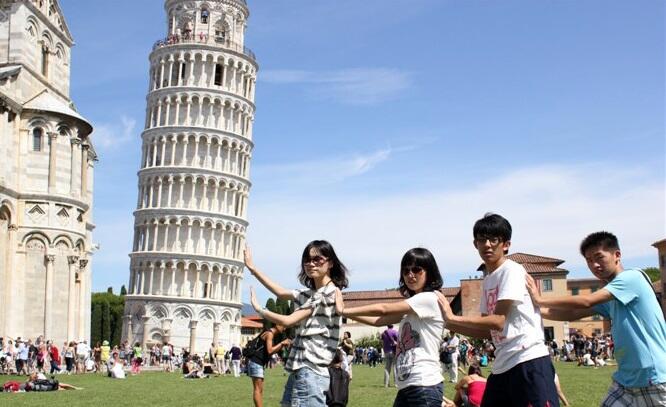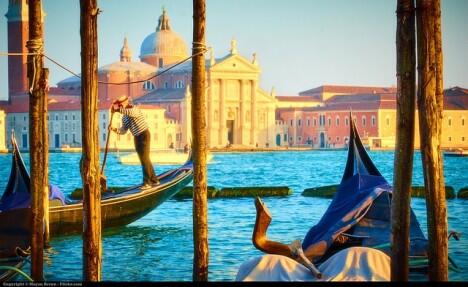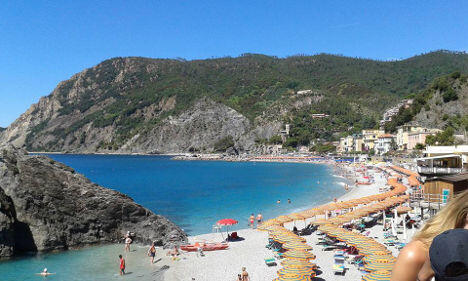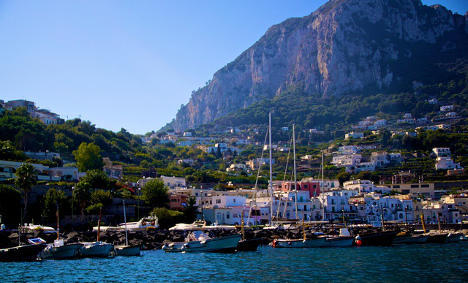Venice, Florence, Pompeii, Rome, Capri and, more recently, the Cinque Terre, are all firm fixtures on most travel itineraries to Italy.
But those well-trodden paths are suffocating under the weight of stampeding tourists, with locals fretting about the impact on the environment and their cultural heritage.
With the number of people visiting Italy so far this summer already up on the record 2015, authorities in some of the country’s most popular destinations are struggling to cope and are urging the government to quickly finalize a national plan to alleviate congestion.
The plan is being put together by the Ministry of Culture in cooperation with the Italian Tourism Board (Enit).
“We are working on a plan that will find ways to resolve the issue of overcrowded places,” Fabio Lazzerini, a director at Enit, told The Local.
“Some places have been thinking of limiting tourist access, in addition to taxes for entering town centres. The debate is still ongoing.”
Venice mayor Luigi Brugnaro has been among the most outspoken leaders, making it his mission to crackdown on the industry that helps fill the canal city’s coffers ever since he was elected in June 2015 .
Some 25 million pour into the Unesco World Heritage site each year, an excessive number which Brugnaro argues “risks flaring confrontation between tourists and residents”.
The mayor has tried several tactics to make the city more ‘liveable’, including giving locals privileged access to vaporetti, or water buses.
But with tourist numbers up again this year, Brugnaro, alongside leaders in other tourist hubs, such as the Cinque Terre, Florence and the island of Capri, are at the end of their tether.
So far this summer, Venice has seen an increase of five percent in the number of visitors, while numbers are up by 5.6 percent in Florence, nine percent in Capri and a whopping 20 percent in the Cinque Terre national park.
There has also been a huge increase in the number of people visiting Sardinia and Sicily as Italians choose to holiday at home due to the threat of terrorism and political turmoil elsewhere, and more foreigners opt for Italy over destinations which have been affected by terrorism, Lazzerini said.
The congestion also impacts the country’s rail network, especially in the five fishing villages that make up Liguria’s Cinque Terre, which are extremely difficult to access by car.
Instead, the mostly day-tripping visitors on packed itineraries come by train or cruiseship, all the while pounding the footpaths that link Monterosso al Mare, Vernazza, Corniglia, Manarola and Riomaggiore, all located inside the Unesco World Heritage national park.
In February, Cinque Terre authorities said the 2.5 million visitors a year were choking the life out of the towns and suggested restricting numbers by making tourists purchase a special card before accessing the trails.
The aim of the plan, which was meant to get underway this summer but seems to have fallen by the wayside, was to bring numbers down to a more sustainable 1.5 million a year.
Fabrizia Pecunia, the mayor of Riomaggiore, told La Stampa the congestion “risked becoming a security and public order issue”.
Over in Capri, off the Amalfi coast, some four million people arrive each year on ferries and hydrofoils. Gianni De Martini, the mayor of the iconic island, said he wants to space out the ferry schedule, with no more than one arriving every 20 minutes.
“In Capri, we have exceeded our limits for sustainable tourist flows, we live among the problems of congestion which are doing irrepairable damage to our reputation,” he told La Stampa.
Florentines, meanwhile, are concerned that the Renaissance city is losing its cherished character as tourists flock there all-year-round.
But what’s the solution?
The aim of the tourism plan is to promote less popular destinations to ease congestion along the well-trodden paths, Lazzerini said.
“We have to work to raise the level of tourism in Italy – we need to attract visitors to other, less well-known destinations.
“Enit and the Ministry of Culture are working together to create a demand for other places. We also need to raise the profile of sites within major cities – for example, in Rome, most people will go to the Colosseum or Trevi Fountain, without knowing that there are plenty of other places worth seeing.”
Source: Thelocal














